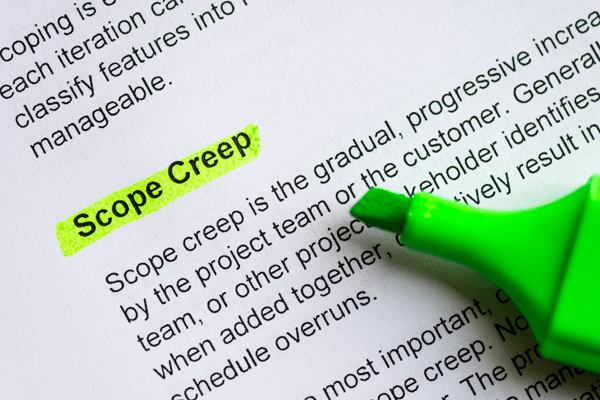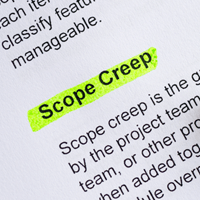How to Avoid Scope Creep in Your Website Project

Over the course of a website project lasting several months, minds are going to change. Opinions and preferences inevitably evolve, especially when you're working with a team, or when new team members join the project. It's very rare to see a project launch with the same direction and goals it had on day one.
So what happens if you sign the agreement, then decide you need to add something to the proposed website that wasn't originally discussed? Making changes that shift the direction or vision of a project is known as "scope creep."
If you initiate scope creep, you're now asking for things that weren't originally agreed upon, which adds up to more work and time spent for the digital agency. If the agency initiates scope creep, they are adding steps to the process that they didn't tell you about before. In the former case, it's essentially unfair to the agency; in the latter, it's careless on their part. Either way, the change orders causing scope creep can add up to additional time and cost, causing friction in the process.
Here are four tested guidelines for avoiding and lessening the impact of scope creep in your organization's website project.

1. Establish a clear scope of work.
The number one thing you can do to combat scope creep is to establish a very clear scope of work from the very beginning to prevent major shifts in the project's direction.
When not handled carefully, change orders destroy the working relationship between the client and the digital agency fairly quickly, especially if the project had a vague scope of work from the very start. There are a lot of different components that need to be thought out, and making decisions mid-project is not the best way to do things.
Of course, sometimes a change order is necessary, but the goal is to minimize the amount of unexpected labor that must be added on. This gets especially dicey when the client requests additional work and doesn't recognize it as a change to the initial scope, which can, in turn, lead to disputes over missed deadlines and rising costs. As the buyer of the website, you never want to be caught in a situation where you're saying, "Oh, I thought that was included."
2. Ensure all stakeholders are involved in making decisions.
Change orders and scope creep also typically occur when a decision-maker is missing during a critical decision, then swoops in later and asks to make a change. If a team or committee is in charge of making the decision, and not everyone signs off on it, this is basically scope creep waiting to happen.
To prevent this, make sure all necessary parties have time to review the project at the end of each production phase to keep everything on track.
3. Accept that scope creep isn't always preventable.
Even with the most meticulous planning and detailed scope of work, there are some things you can't anticipate at the beginning of a project. To complicate matters, the larger the project is, the greater the likelihood that you will want to make some changes. If you're having regular meetings with your own team members and your contact at the agency, you'll likely hear a lot of shiny new ideas being tossed around - ideas you hadn't thought of when you first decided to have a website designed.
The point is that even with the best planning and discipline, you can't anticipate everything. You want to keep your costs from creeping up unnecessarily, but you also want to allow for some flexibility, so if you want to make a change, it doesn't cause a crisis. To avoid getting caught off guard when this happens, allow space in your budget for contingencies.
4. Choose an agency that will be transparent about when scope creep occurs.
A good agency will address change orders and scope creep upfront by saying, "This was not in the terms of our agreement; we're happy to do it, but it will cost more money."
If the agency doesn't communicate this to you upfront, you could be hit with a "gotcha" bill at the end of the project. To protect yourself, make sure there is a provision in your agreement that says, "The customer shall not pay any invoices that are not pre-approved." That way, by virtue of the agreement, the agency has to inform you of additional charges before the work is performed, or it is assumed that the work is being done free of charge.
Remember, scope creep isn't always avoidable, but it's not the end of the world if some elements change a bit over the course of a project. The key to accommodating scope creep is to ensure you and your agency are maintaining an open line of communication and a unified understanding of the project's vision.
About the Author
 Drew Barton is the former webmaster for CNN.com and the founder and president of Southern Web, an award-winning digital agency specializing in Web development and digital marketing solutions. He is the author of The Buyer's Guide to Websites: What You Need to Know to Get the Website of Your Dreams. For more information, please visit, www.southernweb.com.
Drew Barton is the former webmaster for CNN.com and the founder and president of Southern Web, an award-winning digital agency specializing in Web development and digital marketing solutions. He is the author of The Buyer's Guide to Websites: What You Need to Know to Get the Website of Your Dreams. For more information, please visit, www.southernweb.com.







